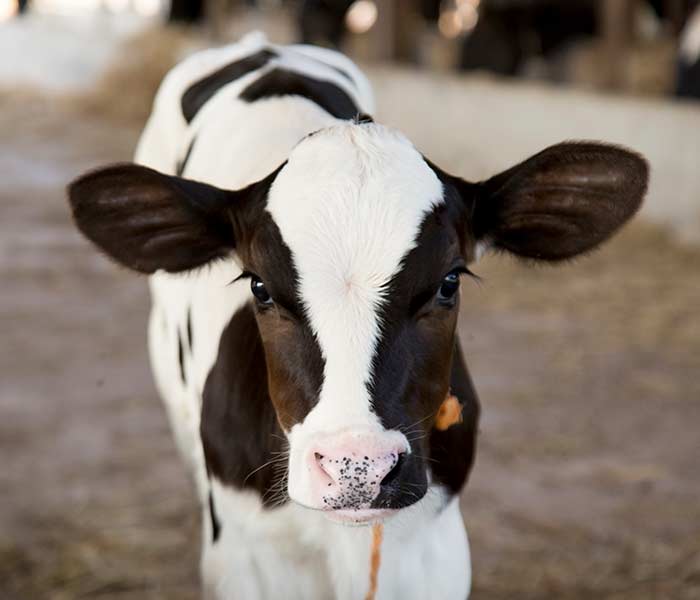Delivering more energy in periods of stress.
Winters in the Midwest pose many challenges to dairy farmers. One common challenge being how to keep calves not only healthy but also growing through this stressful time. As we know, calves use the energy they take in for maintenance first, then growth last. This is best expressed in the following equation:
Energy for Gain = Energy from Intake - Energy for Maintenance
For each degree drop below 50 degrees Fahrenheit, a dairy calf’s energy requirement increases by 1%. With each degree drop, there is less energy left over for gain, and even less if the calf faces immune challenges. To meet calf growth goals during the colder months, the obvious answer is to increase energy from intake. Below are 3 reasons why the incorporation of a fat additive in milk is not the answer to increasing energy intake.
- Based on a 5-year survey by accuweather.com, Wisconsin spends roughly 247 days with an average temperature below 60 degrees Fahrenheit. As we know, cold stress begins at just 68 degrees Fahrenheit for calves less than 3 weeks of age. During times of stress, demand increases for various nutrients aside from fat. Those other nutrients include protein, calories, fat – soluble vitamins, electrolytes, etc. Some fat additives do include other nutrients but it is important to note the amounts as well as the fat source itself.
- Due to the high demand of milk fat in the human consumption market, alternative fat sources are commonly used for additives and commercial milk replacers. Those sources would include tallow, lard, and choice white grease. Unfortunately, the make – up or fatty acid profile of these alternative sources do not match that of cow’s milk and therefore make them difficult for calves to digest and utilize. Cow’s milk is comprised of a blend of long and medium chain fatty acids. A blend similar to cow’s milk will be not only digested but also utilized more effectively by calves.
- Feeding a proper protein to fat ratio. Adding too much fat will throw off the ideal protein to fat ratio (2.5:1 in summer, at least 1.4:1 in winter). The ratio is important to grow dairy calves structurally to meet height benchmarks. Additionally, the extra fat suppresses starter intake and will negatively impact the transition from a liquid to solid diet.
Knowing the importance of delivering more energy in periods of stress, below are three efficient and highly effective ways to increase energy and leave calves with more room for growth.
- Feeding more meals per day or more total solution is the most effective way to increase energy from intake. This may also be the most financially feasible as well. The typical cost of adding an additional ounce of fat costs roughly $.15. The cost of increasing total solution by 3 to 4 ounces is break – even with the cost of fat but provides the calf with a better-balanced diet. If labor does not allow an extra feeding, another option would be to increase the percent solids in each feeding, or amount of powder to water fed. I strongly recommend working with a trusted consultant on how to increase the percent solids in your milk solution.
- Reduce stress and conserve energy by providing clean calf jackets, deep, dry bedding, and fresh, quality water after each feeding. Allowing access to fresh water after feedings will help drive calf starter intake as well.
- Consider the fat sources in your additives or milk replacer. Do they contain a fatty acid profile to meet the calf’s digestive and nutritional needs?
If you are considering evaluating the energy intake of your calves, reach out to one of our Premier consultants today and be sure to ask about the propriety blend of long and medium chain fatty acids found in our commercial milk replacer lineup.

Genny Speckman
Purina Animal Nutrition




